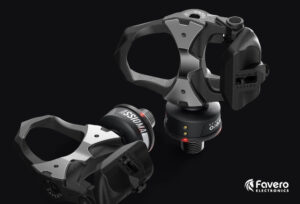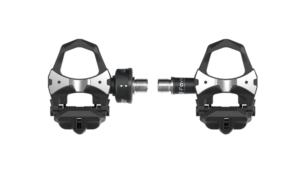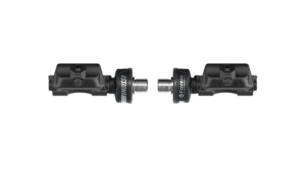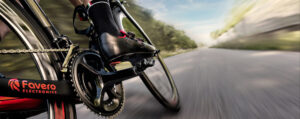The Favero Assioma Duo Is the Best Power Meter for Most Cyclists
THIS PEDAL POWER METER IS LIGHT, OFFERS GOOD VALUE, IS EASY TO USE, AND FULL-FEATURED
The Takeaway:
- Single- or dual-sided power meter pedals
- Transmit Bluetooth and ANT+
- Rechargeable batteries with 50-hour battery life
- Simple to fit and transfer between bikes
- Auto-calibrates
- IAV Power
Weight: 303 grams (pair)
Price: R10 999 (Uno), R15 999 (Duo)
Favero’s Assioma power pedals turn what can be an overwhelming experience into a simple one. What format do you want? Crank axle, crank arm, crank spider, pedal, or something more exotic ? And what about compatibility with your bike? What about features? What about the price? Weight?
For most road cyclists, the power meter you want is the Assioma Duo. It’s a great value, full of features, light, easy to use, and accurate. It makes living with what can be a finicky piece of cycling technology easy.
The Assioma is a pedal-based power meter system from Italian brand Favero. You can purchase a left side only version called Uno for R10 999, or the Duo dual-sided version for R15 999. The pedal is compatible with Look Keo cleats, while the power meter transmits on both Bluetooth Smart and ANT+. That makes it compatible with Garmin and other GPS cycling computers, as well as apps like Zwift that run on smartphones, tablets, laptops, and Apple TV.
The Assioma runs on a rechargeable battery, which lets the company completely seal the electronics, giving it an IP67 waterproof rating. The Assioma has no pods: everything is packed into the pedal axle and sensor body. There’s nothing to align and no complicated installation procedures: just thread it on to the crank.
It is the easiest to recommend because it works so well
The Duo price compares very well to other pedal power meters, and other dual-sided systems, and spider-based systems. It is not the cheapest dual-sided system you can buy, but those systems are generally harder to install, harder to switch between bikes, and more prone to compatibility issues like frame clearance.
Favero Assioma Installation and Use
The Assioma installs with an 8mm Allen key through the back of the crank arm. Just spin it on and snug it down. Super easy, and super easy to move from bike to bike or pull and reinstall when traveling.
Two magnetic charger adapters come with the Duo pedals so that you can charge both pedals at the same time. Also included are a two-port USB wall adapter and a pair of two-meter-long cables. Battery life is 50 hours (probably more, but 50 is a safe bet), and you’ll get a low-battery warning on your computer when the remaining battery life reaches 8 hours. Charging a completely discharged battery takes 6 hours, Assioma says.
The sensor body has four bright LEDs (one every 90 degrees), making them visible – more visible than any other power meter, pedal, or otherwise. This is nice because it makes it easier to see when they wake up, when they’ve calibrated, charge status, and other alerts. It’s a little thing, but a really lovely little thing.
Once installed and charged, you can fire up the Assioma companion app to check status, update firmware, calibrate, and perform other adjustments. One cool feature here is a travel mode, which tells the power meter not to wake up if it senses motion. This conserves the Assioma’s battery while shipping or traveling with your bike.
Pairing to your GPS computer is like any other power meter. Open your sensor pairing menu and find the Assioma (you can find the pedals’ ID numbers printed on the box or in the companion app). Like most other dual-sided power meters, the left pedal collects data from the right pedal and sends it to the head unit (ensure you set the proper crank arm length in the Assioma’s sensor settings). In the companion app, you can also configure the Assioma to work with the small number of computers and apps that require Dual Channel L/R data transmission.
Once charged up and paired up, life with the Assioma was easy. They woke up fast, always paired up, never dropped out, and provided consistent and accurate data. Their performance as pedals was very good too. Clipping in and out was smooth and consistent, they’re secure release tension is adjustable), they were creak free, the axles are plenty stiff, and the bearings spun smoothly. If something wears out or gets damaged, Assioma offers spare parts.
READ MORE A Quick Guide To Understanding Power Metrics
IAV Cycling Dynamics
Thanks to proprietary software solutions, Assioma fully exploits the potential of the integrated three-axis gyroscope, detecting the real trend of the angular velocity, with its variations, and integrating it into the calculation of power. Not only does this increase overall accuracy to ±1% but it also guarantees it in real pedalling conditions.
- Power (Balance, left/right): Which leg is doing the most work.
Cadence: How fast your feet are spinning.
Torque Effectiveness: How much you are using your stroke for forward motion.
Pedal Smoothness: Are you pedalling nice circles? - Platform Center Offset: The position on the across pedal spindle (basically if your foot pushes on the right or left edge of pedal)
Power Phase: Where the majority of your power output is within the pedal stroke (phase)
Rider Position: Whether you are seated or standing
That’s an awful lot of diagnostics in a small unit, but there are sure to be number geeks who will trip on it
Simple, Effective, Affordable.
Compared to the other power meter formats: the pedal/crank interface is one of the only things you can count on being the same from bike to bike. Cranks have axle standards and frame clearance issues to consider. Hubs have axle standards, disc brake standards. Plus, both are tied to the whims of drivetrain standards, which can change at any time. Buy a nice power meter crank today, and it’ll likely not be compatible with the new drivetrain that rolls out in six months. Pedals don’t have these issues.
There are valid reasons to choose other power meter formats, so we’re not going to say the Assioma Duo is the best for every single cyclist. But it is the easiest to recommend because it works so well, and there’s less chance of any compatibility issues with your bike today and in the future.
READ MORE ON: assioma favero new products power meters sponsored








